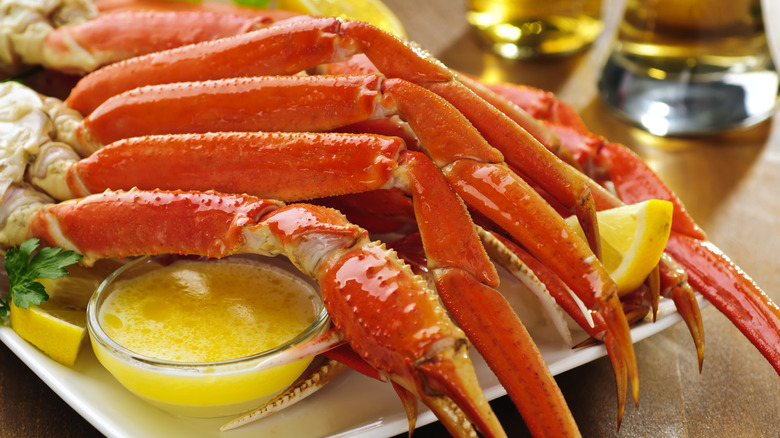The Best Way To Clean Crab Legs For A Seafood Feast
Crabs are among the most delicious crustaceans on the market — and no seafood feast is complete without them. However, as tasty as they are, cleaning crabs can be a bit of a chore. Cleaning a crab body is relatively simple: remove the carapace, discard the gills and innards, extract the meat, and voilà. Sometimes, we forget about legs during the cleaning process because the meat inside the hard shell is eaten as is, but it's crucial to ensure everything is ready for a seamless seafood feast experience.
First things first, check for any signs of spoilage. Fathom Seafood says that if your crab legs have a fishy smell rather than a neutral, slightly sweet aroma, this is a sign the meat is no longer fresh, so it's best to discard it. Another way to tell if crab meat has spoiled is by checking the color of the flesh. If it is anything other than white with a tiny bit of red tint, this indicates spoilage.
Crab legs should also be cleaned before and after cooking to ensure optimum hygiene. Check for barnacles or small black dots and scrape them off using a small brush. Then, rinse the legs under water to remove any debris or sand.
Other tips for cooking and cleaning crab legs
Unless you are working with live crabs, this ingredient usually comes pre-cooked, so you don't have to worry about the cooking part. If you are dealing with live crabs, you can steam or boil them. For flavorful crab legs with a delicate taste and texture, follow our steamed crab legs recipe.
Once cooked, crack open the crab legs using a crab cracker or a small hammer. We don't advise cracking the shell with your teeth, as it may cause them damage. After the meat is exposed, check for any debris or dirt and run it under cold water for good measure. Once clean, you can use the harvested meat in numerous crab recipes or dunk it into melted butter. If you end up with leftover meat, you can save it, but remember: Cooked seafood only lasts about three to five days in the refrigerator, per the USDA.

